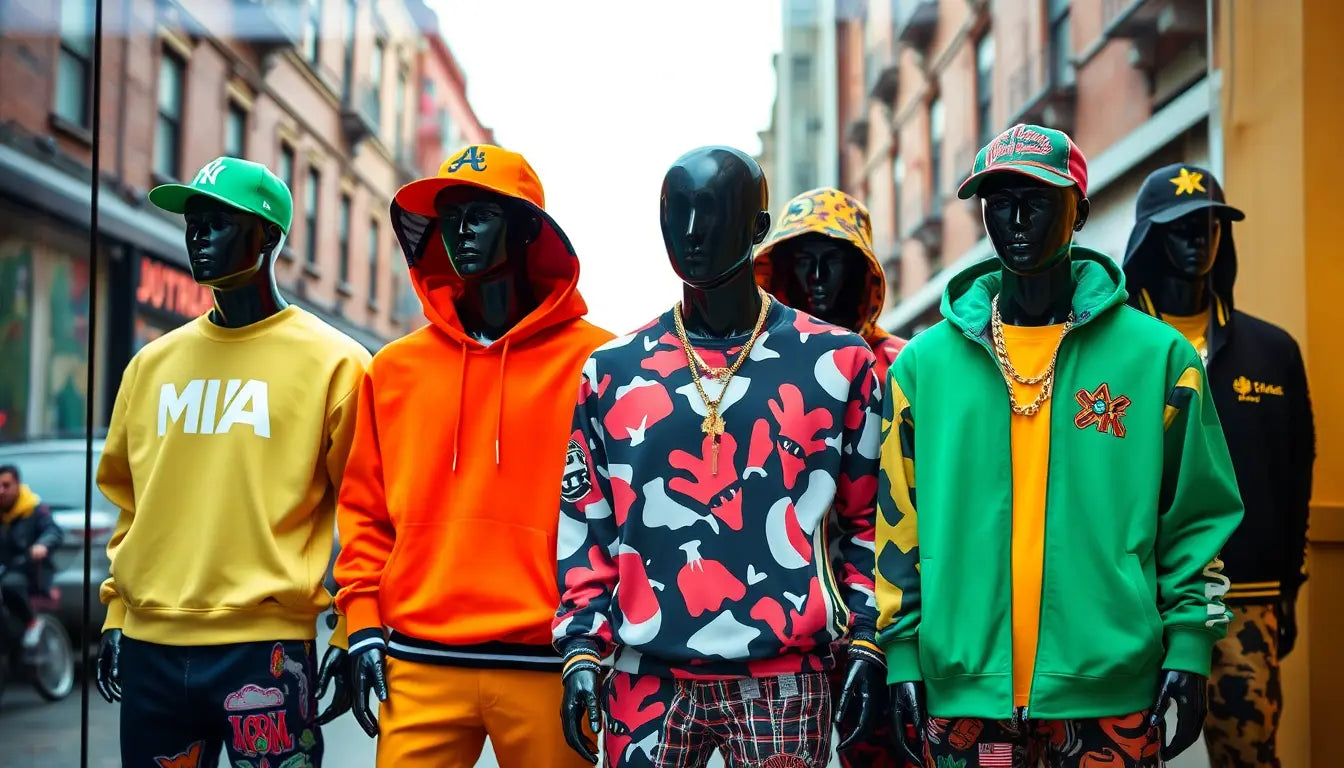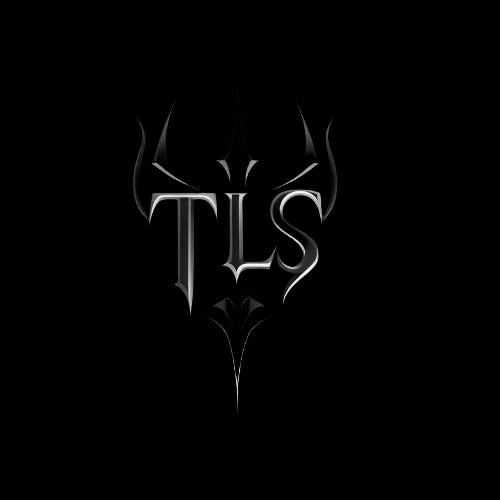
Tommy Lee Sparta Merch: How Fan Co-Creation and Collaborative Design Labs Are Professionalizing Dancehall Streetwear
Tommy Lee Sparta Merch: How Fan Co-Creation and Collaborative Design Labs Are Professionalizing Dancehall Streetwear
Dancehall streetwear has evolved from homemade tees and concert stalls into a serious segment of cultural fashion. One of the most compelling developments in this shift is how artists like Tommy Lee Sparta are leveraging fan co-creation and collaborative design labs to elevate merchandise from commodity to cultural artifact. This long-form guide explores the strategies, mechanics, benefits, pitfalls, and best practices for building professionalized, community-led merch that scales globally while remaining authentic to dancehall roots.
Why This Moment Matters
In 2025 the music-to-fashion pipeline is more sophisticated than ever. Fans expect quality, storytelling, and participation. Artists need diversified revenue streams. The diaspora demands culturally specific products with global distribution. These converging forces mean that merch is no longer a side hustle; it's a strategic brand asset. For Tommy Lee Sparta, whose brand is steeped in striking visual motifs, iconography, and a fiercely loyal fanbase, merch becomes a vehicle for identity and connection.
How Fan Co-Creation Changes the Game
Fan co-creation moves fans from passive consumers to active collaborators. That shift matters for three reasons:
- Emotional ownership: Fans who contribute designs invest in success and become evangelists.
- Market validation: Crowd-sourced preferences reduce guesswork and increase conversion on launch.
- Content generation: The co-creation process produces UGC that fuels organic reach and social proof.
What a Collaborative Design Lab Looks Like
A collaborative design lab is a repeatable process and a mix of people, tools, and rituals. Labs can be physical pop-ups in Kingston, Miami, or London, or fully virtual programs run through design platforms, workshops, and social channels. Core components include:
- Creative brief and brand guardrails
- Open calls and curated submissions
- Rapid prototyping and sample reviews
- Fan voting and pre-order campaigns
- Manufacturing and fulfillment partners
- Feedback loops for continuous improvement
Design and Production Methods for Professional Merch
To move from hobbyist drops to professional product runs, teams need to understand production techniques and their tradeoffs.
- Screen printing: Best for bulk runs and vibrant colors. Economical for larger quantities but requires setup time and inventory management.
- Direct-to-garment (DTG): Good for complex, photo-realistic prints and smaller runs. Higher per-unit cost but minimal setup time.
- Embroidery: Adds premium perceived value. Great for caps and jackets, but more expensive and sometimes limits fine detail.
- Cut and sew: Full garment manufacturing for unique fits and custom fabric choices. Higher cost and longer lead times, but great for establishing a true fashion line.
- Heat transfer and sublimation: Useful for full-bleed prints and specialty fabrics; quality varies by supplier.
Step-by-Step Blueprint: Building a Professionalized Merch Program
This operational blueprint is tailored to an artist-led brand like Tommy Lee Sparta, but adaptable to other dancehall acts and cultural artists.
-
Foundation and Brand Audit
- Define visual language: motifs, color palettes, typography, and photography style.
- Document non-negotiables and guardrails that protect brand voice and cultural integrity.
- Identify target segments: core fans, fashion-forward followers, diaspora collectors, and retailers.
-
Community Engagement and Open Call
- Launch a design brief with clear themes, deadlines, and prize structures.
- Offer transparent compensation: flat fees, royalties, credits, or product bundles.
- Promote the call across social channels, WhatsApp groups, and community spaces.
-
Curate and Prototype
- Shortlist submissions and work with designers to iterate in a lab setting.
- Produce 5-10 physical samples for fit, color accuracy, and material testing.
- Conduct small focus groups with representative fans for feedback.
-
Pre-Launch and Scarcity Engineering
- Open pre-orders with clear lead times to finance production and gauge demand.
- Create tiered drops: early supporter bundles, limited artist-signed editions, and wider runs.
- Use countdowns, influencer seeding, and lookbooks to amplify interest.
-
Production and Fulfillment
- Lock in manufacturers with quality audits and sample sign-offs.
- Plan logistics: warehousing, fulfillment partners, returns policy, and international shipping.
- Use inventory buffers or print-on-demand for slower-selling SKUs to minimize waste.
-
Launch, Measure, Iterate
- Launch with coordinated content across channels and pop-up activations.
- Track KPIs: conversion, AOV, sell-through rate, social engagement, and contributor satisfaction.
- Iterate on future collections using data and fan feedback.
Monetization Models That Reward Fans and Creators
Creative compensation models increase participation and goodwill. Consider these structures:
- Flat fee plus credit: Contributors receive a one-time payment and prominent credit on the product page.
- Small royalty per unit: A percentage of each sale goes to the designer for a defined period.
- Revenue share for limited editions: Contributors split net profits after costs for special runs.
- Prize and scholarship model: Winning designers receive cash prizes plus mentorship or production credits.
Legal and IP Considerations (Practical, Not Legal Advice)
Clear agreements protect artists, contributors, and the community. Elements to cover:
- Ownership or license terms: specify whether contributors transfer IP or grant a license to use the design.
- Credit attribution: how and where contributors will be credited.
- Compensation terms: royalties, payment schedule, and reversal clauses for returns.
- Moral rights and modification: whether the brand can alter submissions for production.
- Dispute resolution: how disagreements will be resolved and what jurisdiction applies.
Work with a qualified attorney to draft contributor agreements and to ensure compliance with tax and labor rules in relevant jurisdictions.
Marketing and Storytelling Strategies to Maximize Reach
A technical product can fail without great storytelling. For Tommy Lee Sparta merch, the narrative is as important as the garment.
- Document the process: Share behind-the-scenes footage from labs, interviews with contributors, and manufacturing visits.
- Fan spotlights: Profile contributing designers, their inspirations, and community impact.
- Capsule storytelling: Tie drops to song releases, lyrics, dance moves, or historical moments in dancehall culture.
- Omnichannel amplification: Coordinate organic posts, paid social, email, and influencer partnerships timed to the launch window.
- Retail partnerships: Seek local boutiques, record stores, and cultural retailers for exclusives and pop-ups.
Technology and Tools for Running a Design Lab
Here are practical tools to run successful co-creation programs:
- Design platforms: collaborative platforms that allow remote design reviews and version control.
- Community platforms: forums, Discord servers, or Telegram channels for real-time fan interaction.
- Ecommerce: Shopify or similar platforms with pre-order and inventory management capabilities.
- Analytics: Google Analytics, social analytics, and product analytics to measure behavior and conversion.
- Project management: tools to manage submissions, approvals, and production timelines.
Case Study Ideas and Campaign Examples
Imagined campaign outlines that could be applied to a Tommy Lee Sparta merch program. These are actionable templates you can adapt.
-
Campaign: The Midnight Drop
- Theme: Dark, atmospheric pieces inspired by a late-night single release.
- Mechanics: Fans submit art based on the single's lyrics; shortlist selected for lab refinement.
- Monetization: 100 numbered limited tees with artist signature and provenance cards; wider DTG run for mainstream fans.
-
Campaign: Roots Series
- Theme: Homage to core dancehall elements and Jamaican artisanship.
- Mechanics: Collaboration with local textile mills and embroidery houses; employment of local artisans.
- Monetization: Higher price points, charity tie-ins, and press coverage focused on cultural preservation.
-
Campaign: Global Collab Lab
- Theme: Diaspora perspectives and international reinterpretations of Tommy Lee Sparta imagery.
- Mechanics: Virtual lab with designers from multiple markets, fan voting by region, and region-specific drops.
- Monetization: Localized pricing and distribution, limited runs per region to boost collectability.
Sustainability and Ethical Considerations
Professionalizing merch also means thinking long-term about environmental and social impact. Key steps:
- Source sustainable fabrics and eco-friendly inks where possible.
- Choose suppliers with transparent labor practices and certifications.
- Use demand-led production models to reduce waste, including pre-orders and small-batch runs.
- Offer repair services or take-back programs for end-of-life garments to build circularity.
Distribution, Pricing, and International Shipping
Expanding beyond local sales requires infrastructure and strategy.
- Pricing strategy: Use tiered pricing — entry-level tees, premium hoodies, and ultra-limited collectibles — to capture multiple segments.
- Shipping: Partner with fulfillment providers that offer international rates, customs handling, and returns processing.
- Localized offerings: Release region-specific SKUs and timed drops that account for cultural calendars and demand patterns.
- Retail partnerships: Stock select retailers or festival booths to reach non-digital customers and press.
KPIs and How to Measure Success
Track metrics that connect community engagement with financial outcomes.
- Pre-order conversion rate: percentage of interested fans who commit to buying.
- Sell-through rate: percentage of inventory sold within a defined window.
- Average order value (AOV): measured by mix and upsells like bundles or signed items.
- Repeat purchase rate: indicates whether apparel becomes a recurring revenue channel.
- Contributor retention: percent of designers who participate in multiple projects.
- Social engagement lift: growth in followers, shares, and UGC tied to campaigns.
Budget Template and Timeline (Sample)
Sample budget for a first professionalized collaborative capsule drop, intended as guidance only.
- Design stipends and admin: 2,500 USD
- Prototyping and samples (10-15 items): 3,000 USD
- Manufacturing (500-1,000 units mixed SKUs): 12,000 USD
- Fulfillment and shipping buffer: 3,000 USD
- Marketing and influencers: 4,000 USD
- Legal and contracts: 1,000 USD
- Contingency: 2,500 USD
Typical timeline: 12-16 weeks from concept to delivery.
Common Pitfalls and How to Avoid Them
- Rushing production: Leads to poor fit and quality issues. Avoid by allowing adequate sampling time.
- Unclear contributor agreements: Causes disputes. Use clear, fair contracts from day one.
- Ignoring the data: Make decisions based on fan feedback and sales signals, not only instincts.
- Overextending SKUs: Too many variants dilute demand. Start tight and expand based on success.
- Misaligning pricing and perceived value: Premium prices require premium narratives and production quality.
How to Scale Without Losing Authenticity
Scaling requires systems, but authenticity is maintained through governance, transparency, and continuing community involvement:
- Maintain a creative advisory group drawn from fans, designers, and cultural leaders.
- Publish transparent reports on royalty payments, contributor outcomes, and social impact.
- Keep limited editions tied to community stories and continue to involve new voices.
- Invest in quality control so scaled products still feel premium and true to the original aesthetic.
Frequently Asked Questions
-
How do you pay fan designers fairly?
Combine upfront payments, royalties, and public credit. Be transparent about margins and timelines.
-
Can co-created designs be changed for production?
Yes, but changes should be communicated and approved by contributors where reasonable. Include a clause about reasonable alterations in the agreement.
-
What if a drop fails to sell out?
Use discounting, bundle deals, and charity tie-ins to move inventory, and analyze what failed to perform for future learning.
-
How do you keep merch culturally authentic?
Create advisory boards with local artists and culture bearers, and compensate them for stewardship roles.
Final Thoughts
Tommy Lee Sparta merch sits at the nexus of culture, commerce, and creativity. Fan co-creation and collaborative design labs are not just marketing tactics; they are methods for professionalizing dancehall streetwear in ways that honor community and unlock sustainable growth. By combining rigorous production standards with participatory processes, artists can create merch that sells, tells stories, and elevates the cultural moment.
Call to Action
If you are an artist, manager, designer, or fan ready to start a co-creation project, begin by mapping your brand guardrails and launching a small lab experiment. Document everything, compensate contributors fairly, and use the data to scale thoughtfully. The future of dancehall streetwear will be shaped by those who balance authenticity with craft and community with commerce.



